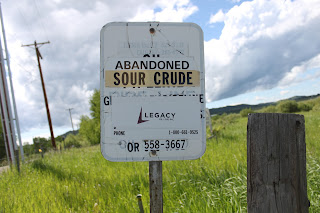Humanity Will Need Two Earths By 2030 WWF
B. McPherson
The World Wildlife Fund has released its Living PlanetReport 2012 and it is warning humanity that something must be done soon to slow
the pillaging of the Earth or we will need the equivalent of two Earths in less
than 20 years.
The natural resources of Earth are being used up faster than
the natural systems can replace them.
The trend in the decline of the Earth’s health is already
evident in the loss of biodiversity, particularly in the tropical regions, but averages
out at about 30% loss of species since 1970. While many might say no loss if a
particular insect disappears, the loss of one species has impact on the
viability of others. A basic tenet of ecology is “Everything is connected to
everything else.” Poisoning of agricultural land and water coupled with poor
husbandry has led to desertification and abandonment of farmland. Humans aid
invasive species which upset the delicate balances of plants and animals in an
area. Just this morning reports are coming in about a snake head fish indigenous
to Asia being spotted in a Vancouver lagoon. (Vancouver Sun). These fish eat
anything including small mammals and can survive out of water for up to half an
hour.
This warning comes as human populations swell, doubling
since 1950 to 7 billion globally. Developed countries use far more resources
per person than undeveloped. The debate goes on and on about whether small
population developed countries use more than their share of global resources or
whether high population developing countries use more. The debate is blinding
us to the fact that we are now a global village and there is no other place. We
are all affected by events a hemisphere away and will suffer no matter where we
live if we haven’t the will to change.
If all of humanity lived like an average resident of Indonesia, only two-thirds of the planet’s biocapacity would be used; if everyone lived like an average Argentinean, humanity would demand more than half an additional planet; and if everyone lived like an average resident of the USA, a total of four Earths would be required to regenerate humanity’s annual demand on nature.WWF
Page eight of the report has a graph showing the ecological
footprint of many of the world’s countries based on a per person usage. So
while it tells us that what individuals generally are impacting the world, it
doesn’t tell us how much that country impacts the world. For instance the
people who individually impact world resources the most are those living in
Qatar. Chinese people in the PRC rank 13th in resource usage. The
population of Qatar is about 1.7 million; population of China is greater than
1.34 billion.
Top 10 Resource
Users by Individuals(from WWF report)
·
Qatar
·
Kuwait
·
United Arab Emirates
·
Denmark
·
United States of America
·
Belgium
·
Australia
·
Canada
·
Netherlands
·
Ireland
Many of the rich countries literally mine the resources of
the poorer ones, leaving the residents there with less and less materials to
survive.
While it may sound hopeless at this stage, we can each do
our part to help the degradation of our Blue Planet. Here are some suggestions.
·
Reduce what you buy, consume less meat and
increase your vegetables.
·
Consume and manufacture smarter, more
efficiently using less energy and fewer materials
·
Protect local biodiversity, volunteer to help remove
invasive species
·
Follow the money you as taxpayers are sending to
other countries. Does the money contribute to big business exporting pollution
overseas?
·
Develop a more global view. Remember the photos
of Earth from space – the big blue marble. We are all in this together.


Comments
Post a Comment